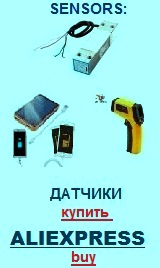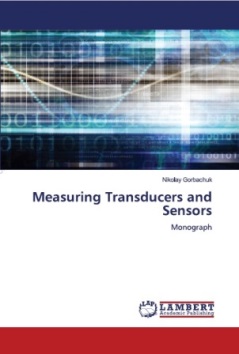Transducers, gauges, sensors - Information portal © 2011 - 2025 Use of material is possible by placing an active link
Physical basis of the transformation of the measured parameters
Ionizing radiation




Home >> Physical basis of transformation of measureable parameters >> Capacitance-resistance
русский / english
• Information about various converters and sensors of physical quantities, parameters of various physical processes is presented.
• Electrophysical properties and effects in various electrical materials.
• Theory, experimental results, practical application
Capacitance-resistance transducers
The very large class of measuring transducers are capacitance-resistance transducers, principle of action of which is based on transformation of value of measurand to the change of resistance. The last can be caused by different effects in a transforming element, for example heating or cooling, mechanical tension, influence of light stream (as in photo conducting transducers ), moistening, drainage, mechanical moving of pin brush of rheostat.
If through resistance material the fixed current flows during the change of measurand, then a result will be a change of tension along material, which reflects the change of measurand.
One of variants of capacitance-resistance transducer is a potentiometer transformer, in which the change of measurand will be transformed in the change of relation of tensions because of change of position of pin brush on capacitance-resistance material, fed from outsourcing (fig. 10). A certain mechanical element will transduce the change of measurand in moving of brush.
Fig. 10. Capacitance-resistance transformation, which a potentiometer device is used for, defiant the change of output tension
Fig. 11. Equivalent chart of potentiometer device, represented on a fig. 10
Potentiometer, represented on a fig. 10, it is possible to present as an equivalent electric chart, as it is done on a fig. 11. His output tension is determined by expression
Vo = V1R2 /( R1 + R2)
where V1 is tension on an entrance.
When the tension put on the entrance of device is permanent and a measureable value is determined by position of brush of potentiometer, then output tension is directly function of measurand.
In transducers potentiometer devices (with one or a few resistances in a chart) can be used or they are a potentiometer. In last case a potentiometer element will be variable. Some transducers have unwire resistances, such, as ceramet substrate or conducting plastic tape. There are potentiometers in which complete range changes of position of brush 270°is equal, while other constructions have a range in 10 or even 20 complete turns (3600 or 7200°),
Bridge of Uitstona
The bridge of Uitstona appears by parallel connection of two potentiometer devices (fig. 12). He can be used for the high-fidelity measuring of resistance. Output tension of bridge of Uitstona
Vo = V1(R3/(R3 + R4) - R1/(R1 + R2).
Fig. 12. Combination of two potentiometer divizors, formative the bridge of Uitstona
Fig. 13.Tenzometrical transducer
During the exact setting output tension of bridge of Uitstona must be equal to the zero, where it is necessary from, that
R3/R4 = R1/R2
1+ R3/R4 1+ R1/R2
then get
R1/R2 = R3/R4

See also:
CONVERTERS, GAUGES, SENSORS
Information, news, advertising


